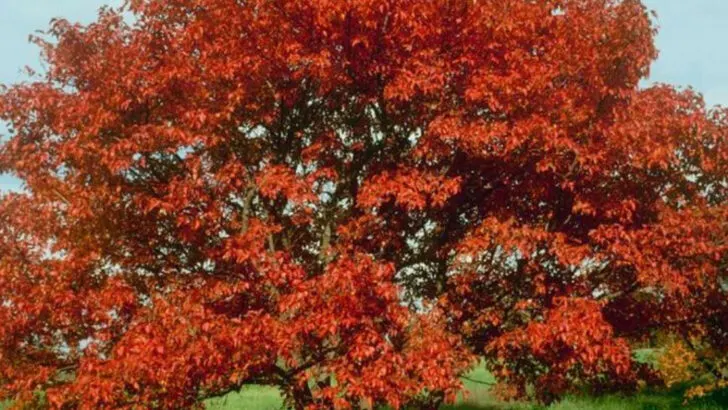If you’re someone who loves surprises in the garden, these plants are about to become your new favorites. Some plants don’t just bloom and fade—they transform. Their leaves, flowers, or even stems shift color throughout the seasons, creating a constantly evolving landscape that never gets boring. Think of them as living mood rings, reflecting the rhythms of nature in the most unexpected ways.
From fiery spring reds that mellow into summer greens, to blooms that open in one hue and fade into another by evening, these plants bring drama and movement to your garden without any extra effort. And the show isn’t just limited to fall foliage—many of these beauties change multiple times a year, offering surprises from early spring until the first frost.
In this guide, you’ll find 17 stunning plants that will keep you watching and wondering. Whether you want a garden that tells a story or just something fun to look at every time you step outside, these color-changing wonders deliver all season long.
Japanese Maple
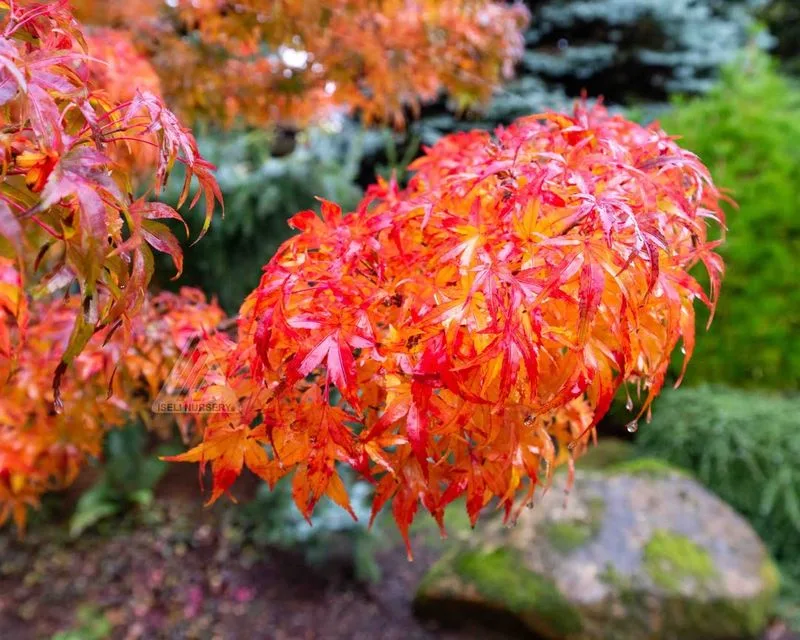
Renowned for its vivid display of autumnal colors, the Japanese Maple is like a living canvas that paints your garden with shades of red, orange, and yellow. Even during spring and summer, its foliage maintains interest with delicate green and burgundy tones.
Originating from Japan, this tree is beloved for its delicate leaves and elegant structure. It thrives in various climates, making it a versatile addition to many landscapes.
Did you know? The Japanese Maple has been a symbol of grace and elegance in Japanese culture for centuries, often featured in traditional art.
Sweetgum
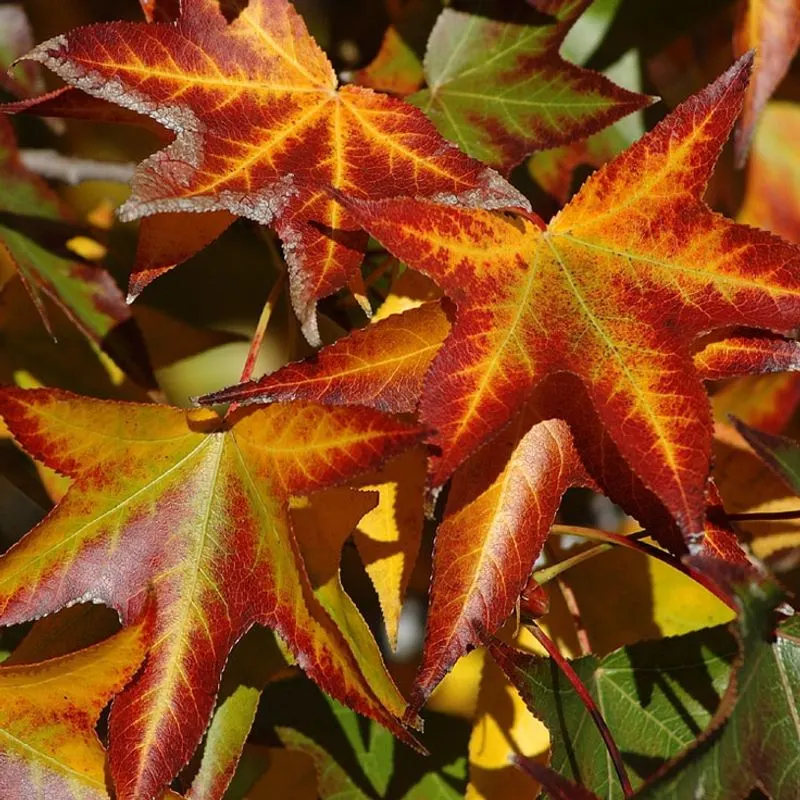
With its star-shaped leaves, Sweetgum transforms into a fiery spectacle in the fall. The leaves transition from deep greens in summer to brilliant reds, oranges, and even purples as the temperature drops.
Sweetgum trees are native to the eastern United States and are often found lining streets and in parks. They not only offer visual beauty but also provide habitat for various bird species.
Fun fact: The distinctive seed pods of Sweetgum, often called ‘gumballs,’ are not only intriguing to look at but also serve as natural mulch.
Burning Bush
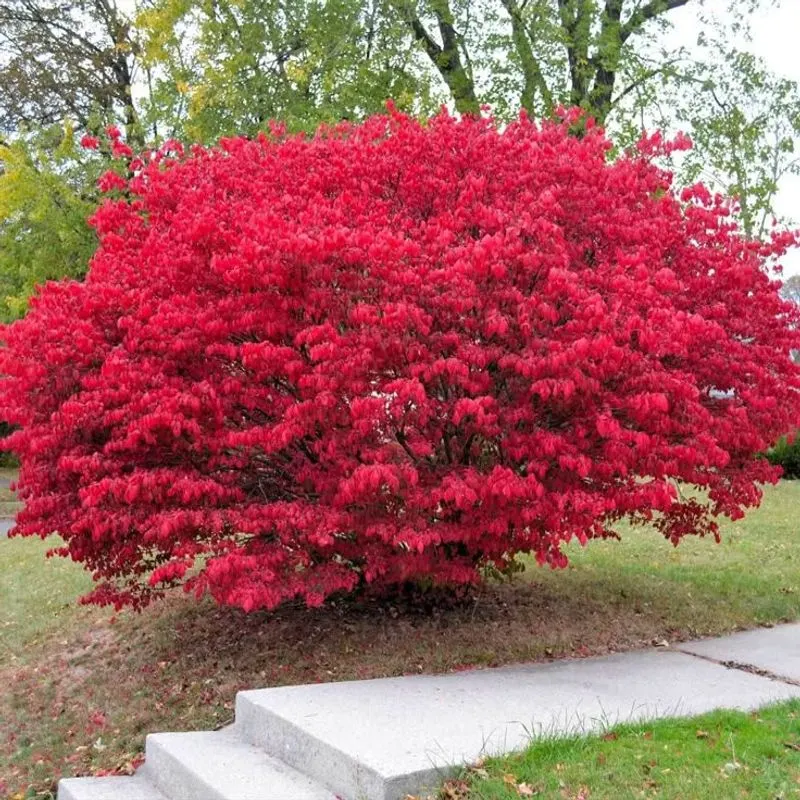
Known for its dramatic transformation, the Burning Bush lives up to its name every fall. Its leaves turn a brilliant, almost neon red, creating a striking effect in any garden.
This hardy shrub can thrive in a range of soil conditions, making it a popular choice for low-maintenance gardens. Its dense growth also provides excellent privacy and windbreak.
Interestingly, the Burning Bush is often used in landscaping for its ability to adapt to urban environments, bringing a touch of nature to city living.
Staghorn Sumac
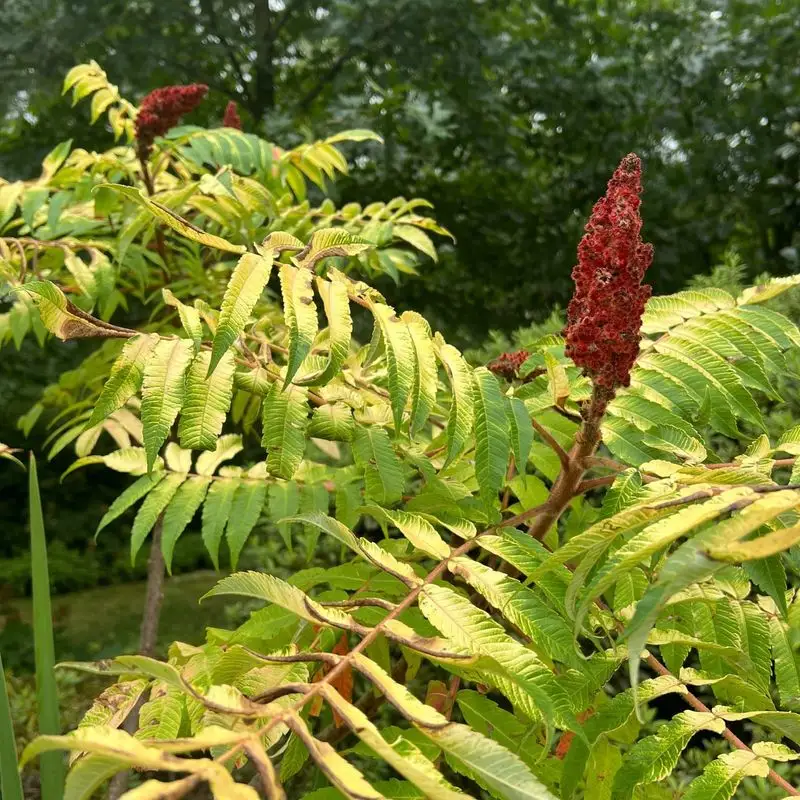
The Staghorn Sumac is a beacon of color in the fall, with its fern-like leaves blazing in shades of red and orange. This plant creates a striking visual contrast against the autumn sky.
Native to North America, it’s not only admired for its beauty but also its resilience and ability to grow in poor soil conditions. This makes it a favorite for erosion control.
A quirky bit: The velvety texture of its branches inspired its name, resembling the antlers of a deer in velvet.
Redbud
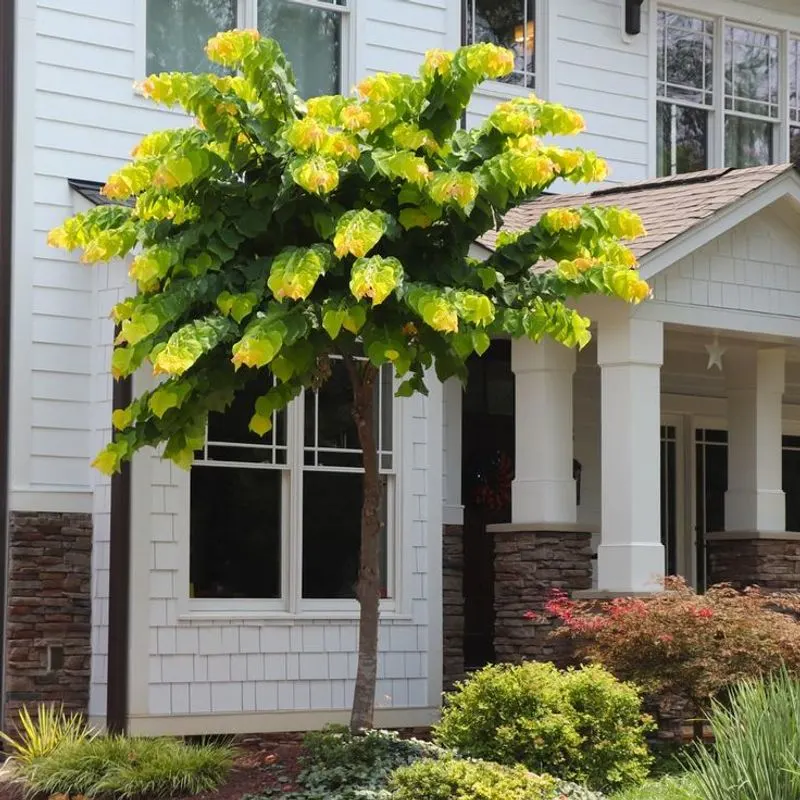
In early spring, Redbud trees are adorned with vibrant pink blossoms that give way to heart-shaped leaves. As the seasons change, the leaves transition from a bright green to a warm golden-yellow.
These trees are native to North America and are often one of the first to bloom, signaling the arrival of spring. Their unique leaf shape adds an interesting texture to gardens.
Fun fact: The blossoms of the Redbud are edible and often used in salads or as garnishes, adding a splash of color to culinary creations.
Virginia Creeper
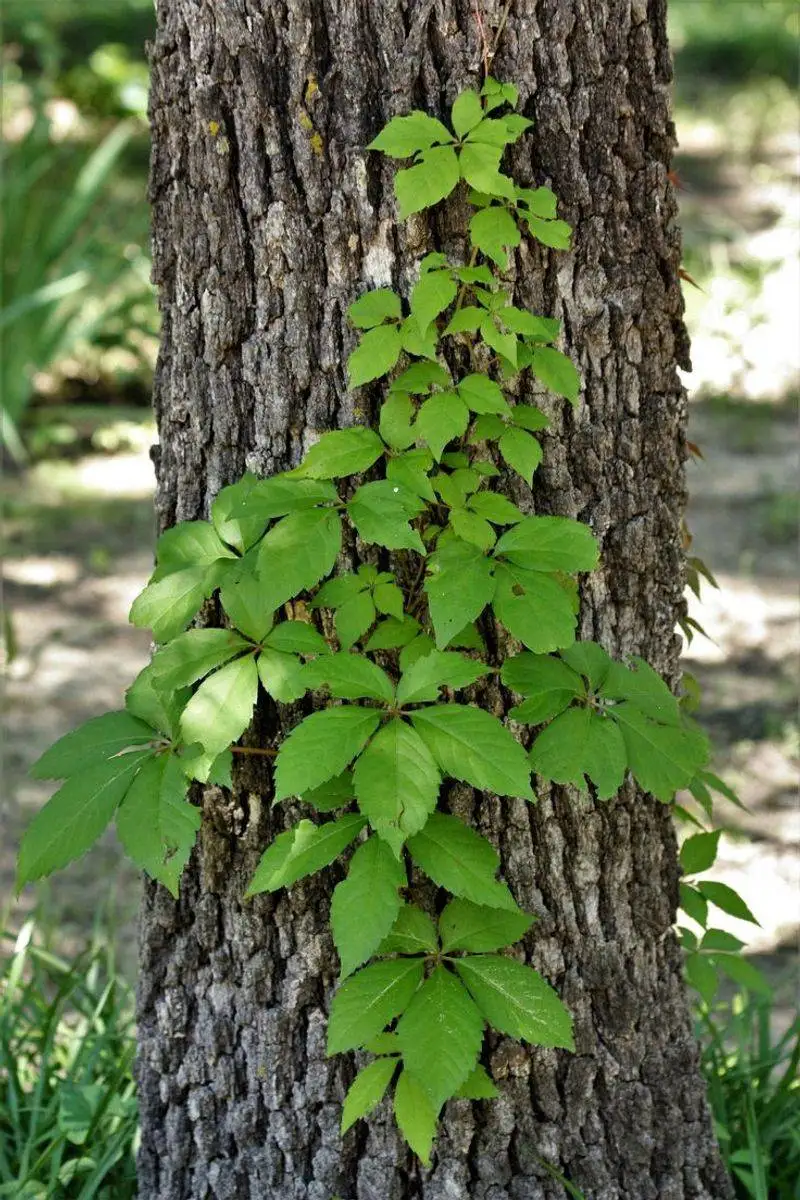
Virginia Creeper is a vigorous vine that adorns walls and fences with a lush green tapestry in spring and summer. Come fall, its leaves explode into a riot of red and purple, creating a stunning display.
This hardy plant is native to eastern and central North America and can tolerate a variety of growing conditions. It’s often used to cover unsightly structures with its rapid growth.
An interesting tidbit: Despite its beauty, it can be invasive, so regular maintenance is key to keeping it in check.
Oakleaf Hydrangea
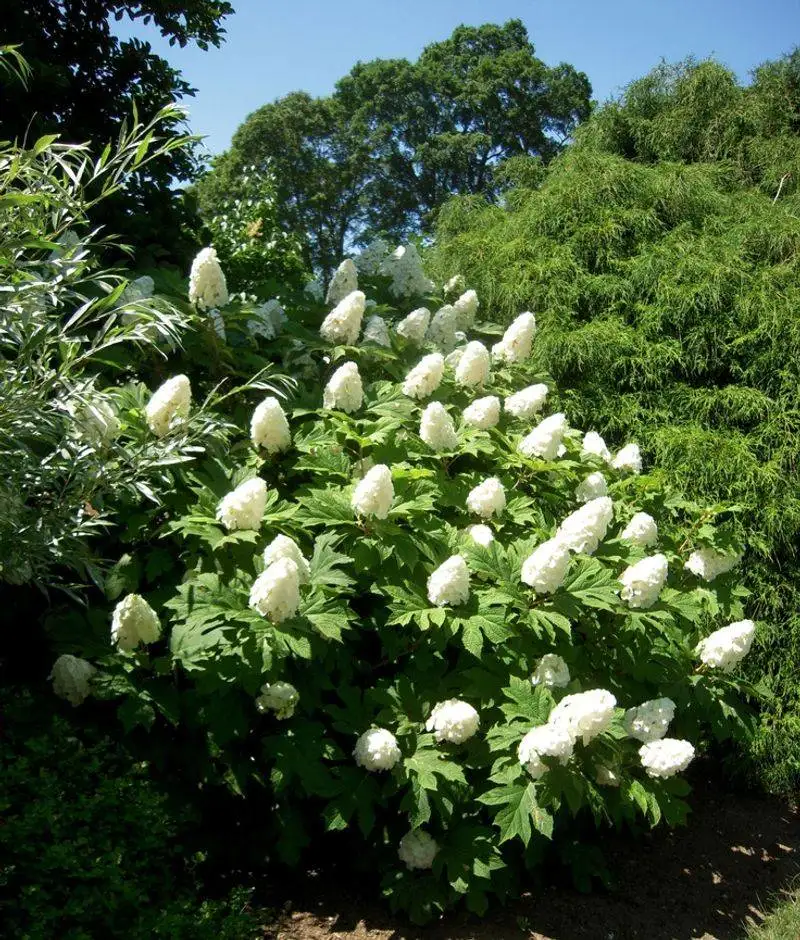
The Oakleaf Hydrangea is a dynamic plant known for its large, lobed leaves that turn from green to rich shades of red and purple in the fall. Its conical flower clusters add to its visual appeal, changing from white to pink as they mature.
Thriving in woodland gardens, this plant offers year-round interest with its peeling bark and dramatic foliage.
Did you know? The name ‘Oakleaf’ refers to the shape of its leaves, which resemble those of an oak tree, adding to its unique charm.
Fothergilla
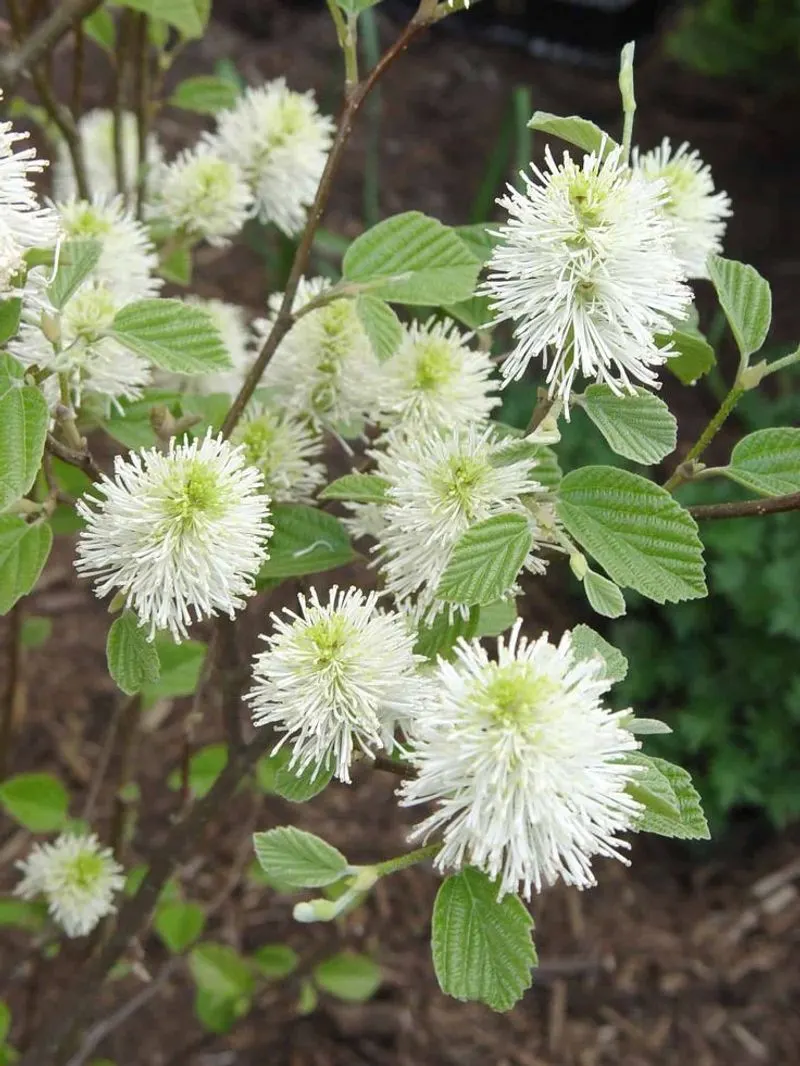
Fothergilla is a compact shrub that puts on a dazzling display of colors in the fall, with leaves turning crimson, orange, and gold. In spring, it offers honey-scented white blooms that attract pollinators.
Native to the southeastern United States, it thrives in well-drained soils and is perfect for woodland gardens.
A fun fact: Fothergilla is named after John Fothergill, an 18th-century English physician and plant collector, highlighting its rich botanical history.
Spirea
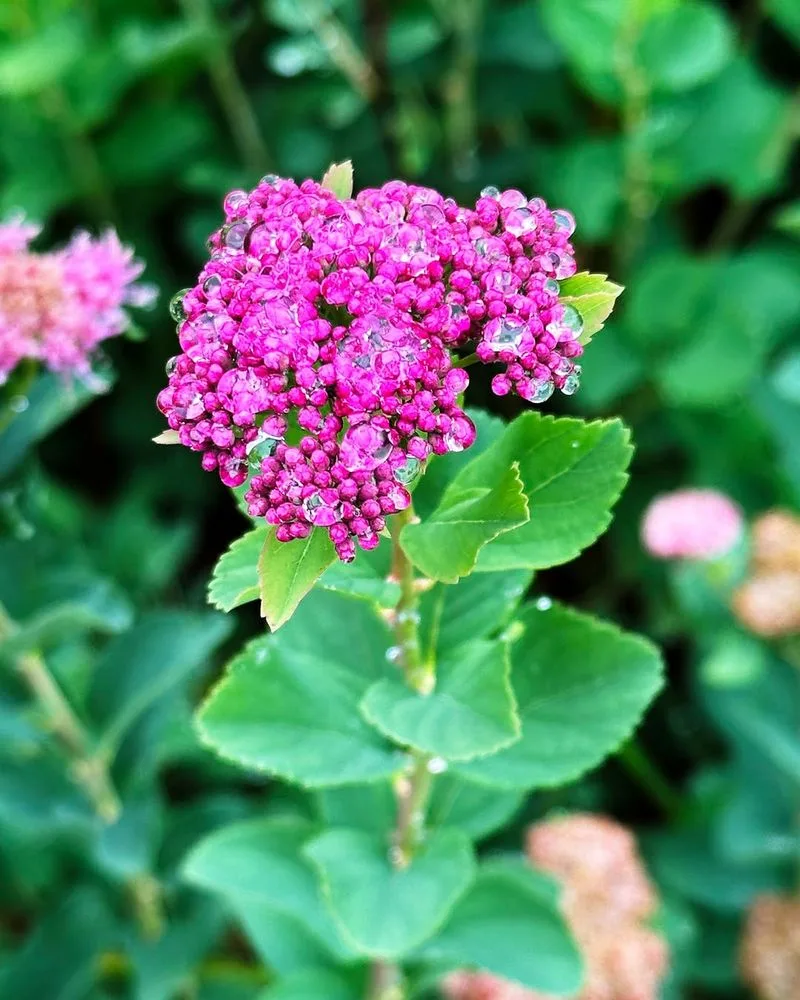
Spirea is a versatile shrub that offers a burst of pink or white flowers in spring, followed by foliage that turns vibrant shades of red and orange in the fall.
This plant is often used in landscaping for its hardiness and ability to thrive in a variety of soil types. Its compact size makes it suitable for small gardens or borders.
Interestingly, Spirea is part of the rose family, adding a touch of romance to any planting scheme.
Amur Maple
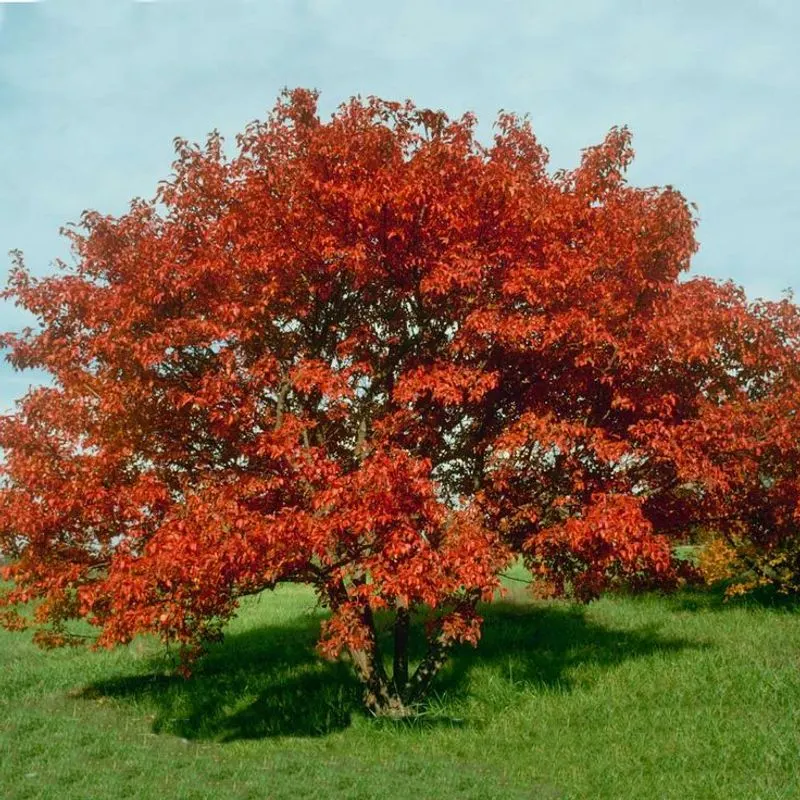
The Amur Maple is admired for its brilliant fall colors, with leaves turning shades of fiery red and orange. In spring and summer, it provides lush green foliage, making it an excellent choice for ornamental planting.
Originating from Asia, this tree is well-suited to colder climates and compact spaces due to its moderate size.
Did you know? The Amur Maple’s adaptability makes it a popular choice for bonsai enthusiasts, who appreciate its striking appearance in miniature form.
Ninebark
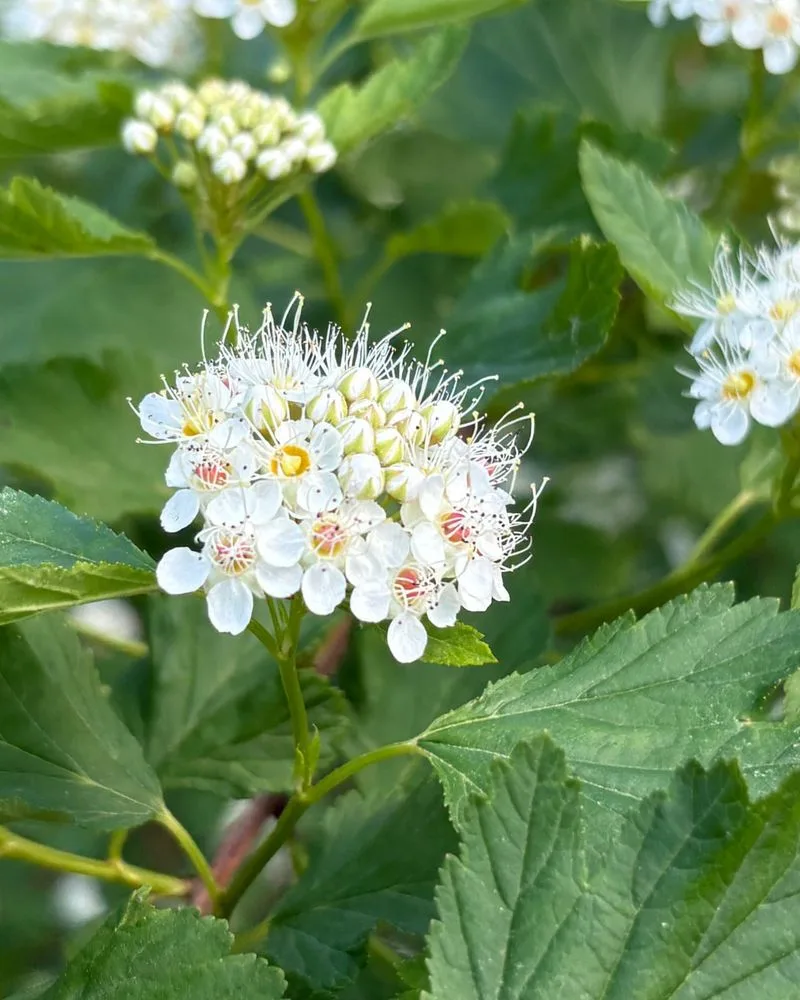
Ninebark is a rugged shrub known for its unique peeling bark and colorful foliage. In fall, its leaves transition to warm shades of red, orange, and burgundy.
Native to North America, Ninebark is valued for its hardiness and ability to thrive in diverse environments, from rocky soils to urban landscapes.
A quirky fact: Its name derives from the appearance of its bark, which peels away in layers, adding an interesting texture to gardens even in winter.
Quaking Aspen
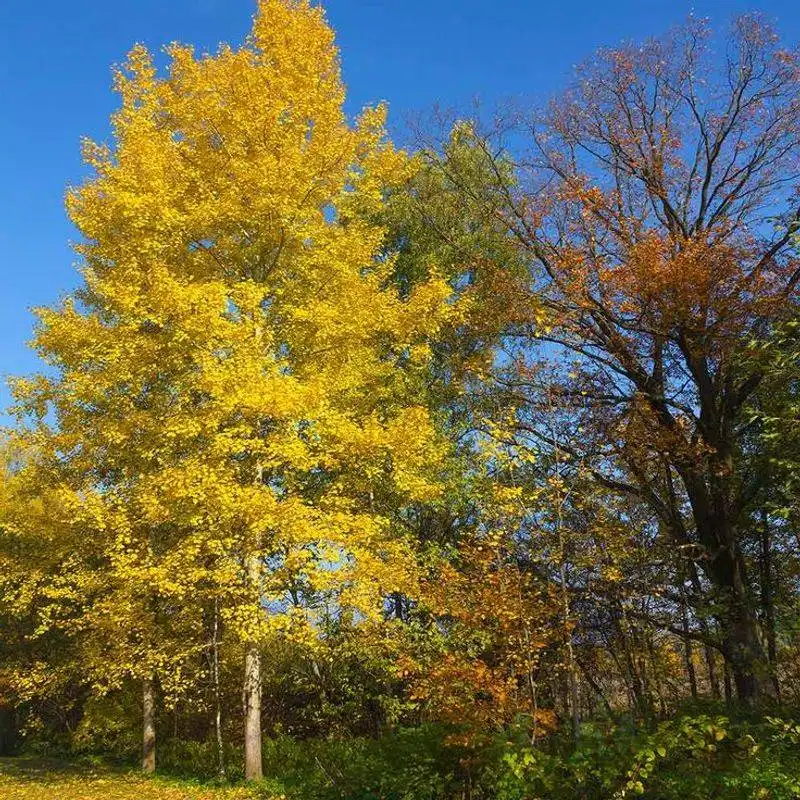
Quaking Aspen is famous for its shimmering golden leaves that quiver in the slightest breeze, creating a mesmerizing autumn spectacle.
These trees are native to cooler regions of North America and are known for their rapid growth and ability to form large groves through root suckers.
Fun fact: The name ‘Quaking’ refers to the trembling movement of the leaves, caused by flattened petioles that catch the wind easily.
Serviceberry
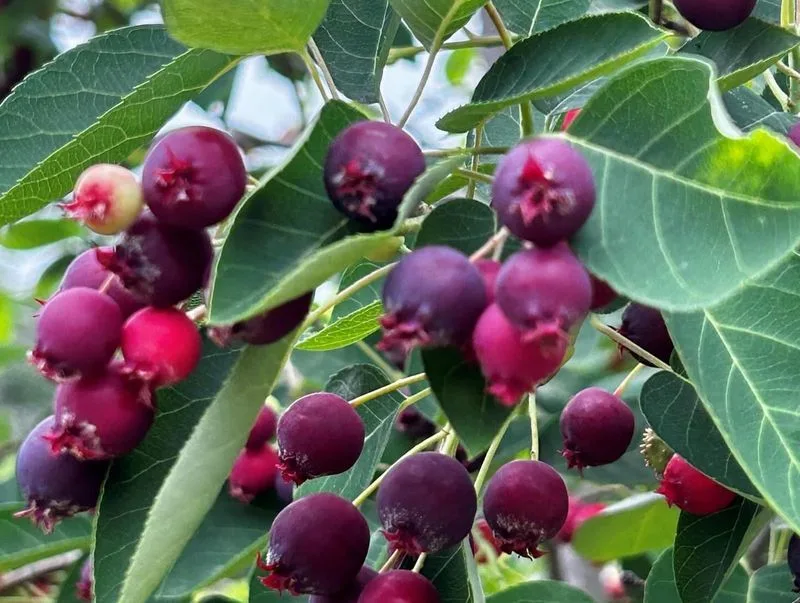
Serviceberry trees offer a delightful progression of colors and blooms throughout the seasons. Starting with white blossoms in spring, their foliage turns a beautiful red-orange in the fall.
These trees are native to North America and provide not only visual interest but also edible berries that attract wildlife.
A charming tidbit: The name ‘Serviceberry’ is linked to a time when blooming indicated that the ground had thawed enough for burial services to be conducted after winter.
Witch Hazel
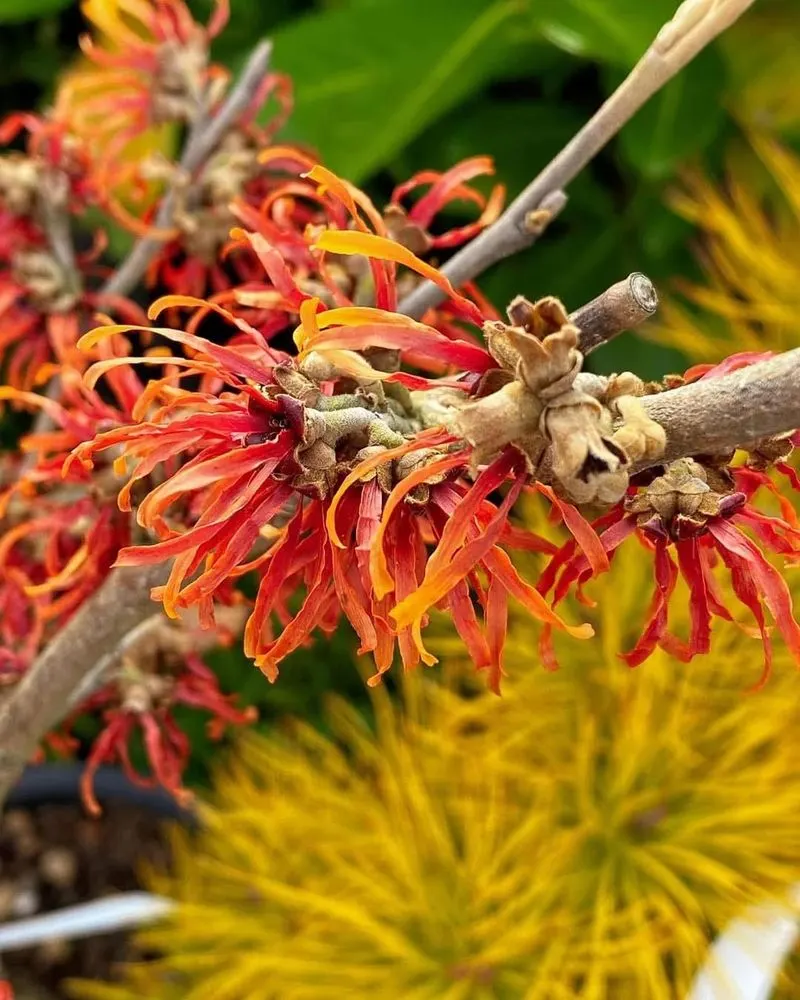
Witch Hazel is unique for its spidery yellow flowers that appear in late fall to early winter, accompanied by leaves that turn orange-red.
This shrub is native to North America and is often used for its astringent properties in skincare products.
Did you know? Witch Hazel’s name is derived from the Old English word ‘wice,’ meaning pliant or bendable, reflecting the flexibility of its branches.
Red-Twig Dogwood

Red-Twig Dogwood is a standout in winter gardens, with its bright red stems offering color when most plants are dormant. In fall, its leaves transition to shades of purple and red.
This shrub is native to North America and thrives in wet soil, making it ideal for rain gardens or along water features.
Fun fact: The striking red stems are often used in floral arrangements, adding a pop of color and texture.
Smoke Bush
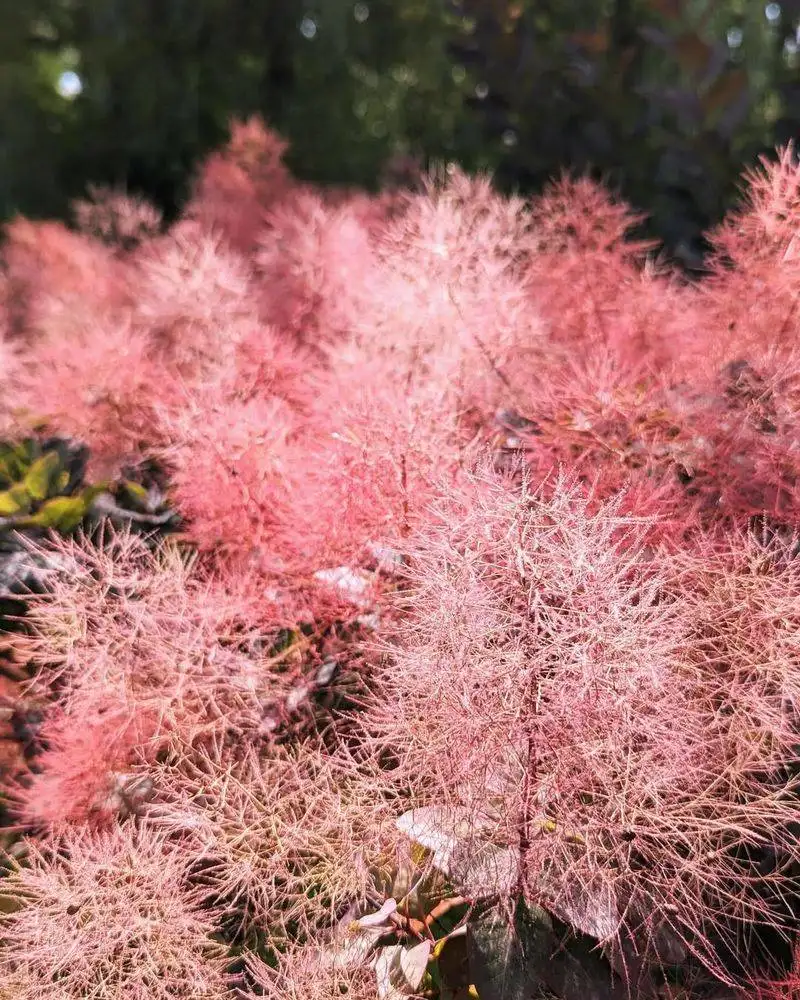
The Smoke Bush is prized for its dramatic foliage and unique flower clusters that resemble puffs of smoke. In fall, the leaves turn a stunning shade of deep purple.
This shrub is native to southern Europe and central Asia, thriving in sunny locations with well-drained soil.
A quirky note: The ‘smoke’ effect comes from the long, hair-like stems of the flower clusters, giving the plant its distinct appearance.
Katsura Tree
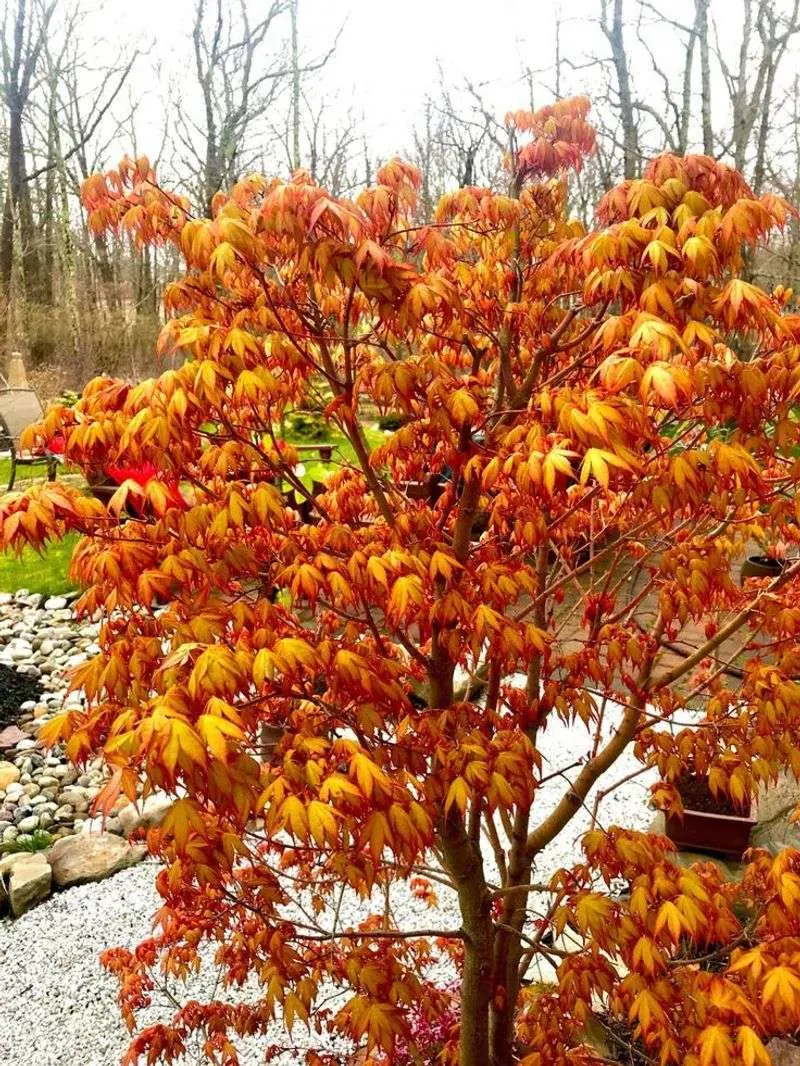
Katsura Tree captivates with its heart-shaped leaves that transform into a tapestry of yellow and pink hues in the fall. In spring, the leaves emerge with a red tint before turning green.
Native to Japan and China, this tree is often planted for its ornamental value and sweet caramel-like fragrance when the leaves fall.
Interesting tidbit: The Katsura Tree’s scent is often compared to cotton candy, making it a delightful sensory addition to gardens.

